Potrebujeme váš súhlas na využitie jednotlivých dát, aby sa vám okrem iného mohli ukazovať informácie týkajúce sa vašich záujmov. Súhlas udelíte kliknutím na tlačidlo „OK“.
ASTM D5864-11
Standard Test Method for Determining Aerobic Aquatic Biodegradation of Lubricants or Their Components
Automaticky preložený názov:
Štandardná skúšobná metóda pre stanovenie aeróbnej biodegradácie mazív alebo ich častí
NORMA vydaná dňa 1.3.2011
Informácie o norme:
Označenie normy: ASTM D5864-11
Poznámka: NEPLATNÁ
Dátum vydania normy: 1.3.2011
Kód tovaru: NS-32851
Počet strán: 8
Približná hmotnosť: 24 g (0.05 libier)
Krajina: Americká technická norma
Kategória: Technické normy ASTM
Kategórie - podobné normy:
Anotácia textu normy ASTM D5864-11 :
Keywords:
aerobic biodegradation, aquatic biodegradation, degree of biodegradation, lubricant biodegradability, municipal sewage, sewage, sludge, theoretical CO2 evolution, Aerobic/anaerobic biodegradation--petroleum products, Aquatic biodegradation, Biodegradation--petroleum products, Carbon dioxide content, Lubricant biodegradability, Municipal sewage, Sewage, Sludge, Theoretical CO2 evolution, ICS Number Code 13.060.70 (Examination of water for biological properties)
Doplňujúce informácie
| Significance and Use | ||||||||||||||
|
Results from the test method suggest, within the confines of a controlled laboratory setting, the degree of aerobic aquatic biodegradation of a lubricant or components of a lubricant by measuring the evolved carbon dioxide upon exposure of the test material to an inoculum. The plateau level of CO2 evolution in this test method will suggest the degree of biodegradability of the lubricant. Test substances that achieve a high degree of biodegradation in this test may be assumed to easily biodegrade in many aerobic aquatic environments. Because of the stringency of this test, a low yield of CO2 does not necessarily mean that the test substance is not biodegradable under environmental conditions, but indicates that further testing is necessary to establish biodegradability. Information on toxicity to the inoculum of the test substance may be useful in the interpretation of low biodegradation results. Activated sewage-sludge from a sewage-treatment plant that principally treats domestic waste is considered an acceptable active aerobic inoculum available over a wide geographical area in which to test a broad range of lubricants. An inoculum derived from soil or natural surface waters, or both, or any combination of the three sources, is also appropriate for this test method. Note 1—Allowance for various and multiple inoculum sources provides access to a greater diversity of biochemical competency and potentially represents more accurately the capacity for biodegradation. A reference or control substance known to biodegrade is necessary in order to verify the activity of the inoculum. The test must be regarded as invalid and should be repeated using a fresh inoculum if the reference does not demonstrate a biodegradation of > 60 % of the theoretical CO2 evolution within 28 days. A total CO2 evolution in the blank at the end of the test exceeding 75 mg CO2 per 3 L of medium shall be considered as invalidating the test. The water solubility or dispersibility of the lubricant or component may influence the results obtained and hence the procedure may be limited to comparing lubricants or components with similar solubilities. The ratio of carbon incorporated into cellular material to carbon released as CO2 will vary depending on the organic substrate, on the particular microorganisms carrying out the conversion, and on the environmental conditions under which the conversion takes place. In principle, this variability complicates the interpretation of the results from this test method. |
||||||||||||||
| 1. Scope | ||||||||||||||
|
1.1 This test method covers the determination of the degree of aerobic aquatic biodegradation of fully formulated lubricants or their components on exposure to an inoculum under laboratory conditions. 1.2 This test method is intended to specifically address the difficulties associated with testing water insoluble materials and complex mixtures such as are found in many lubricants. 1.3 This test method is designed to be applicable to all lubricants that are not volatile and are not inhibitory at the test concentration to the organisms present in the inoculum. 1.4 This standard does not purport to address all of the safety concerns, if any, associated with its use. It is the responsibility of the user of this standard to establish appropriate safety and health practices and determine the applicability of regulatory limitations prior to use. Specific hazards are discussed in Section 10. |
||||||||||||||
| 2. Referenced Documents | ||||||||||||||
|
Podobné normy:
Historická
1.2.2008
Historická
1.3.2013
Historická
1.12.2012
Historická
1.3.2013
Historická
1.3.2013
Historická
1.3.2013
Odporúčame:
Aktualizácia technických noriem
Chcete mať istotu, že používate len platné technické normy?
Ponúkame Vám riešenie, ktoré Vám zaistí mesačný prehľad o aktuálnosti noriem, ktoré používate.
Chcete vedieť viac informácií ? Pozrite sa na túto stránku.


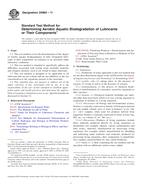
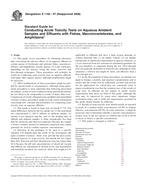 ASTM E1192-97(2008)..
ASTM E1192-97(2008)..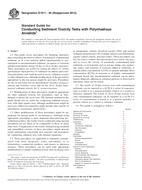 ASTM E1611-00(2013)..
ASTM E1611-00(2013)..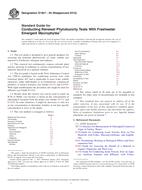 ASTM E1841-04(2012)..
ASTM E1841-04(2012)..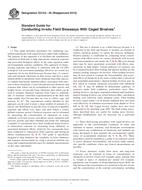 ASTM E2122-02(2013)..
ASTM E2122-02(2013)..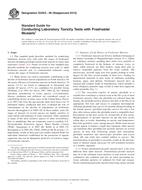 ASTM E2455-06(2013)..
ASTM E2455-06(2013)..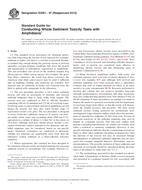 ASTM E2591-07(2013)..
ASTM E2591-07(2013)..
 Cookies
Cookies
